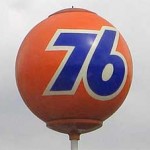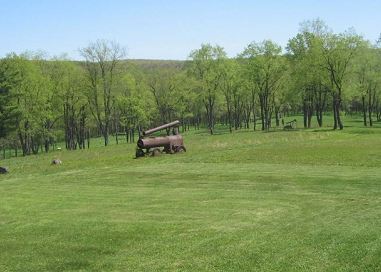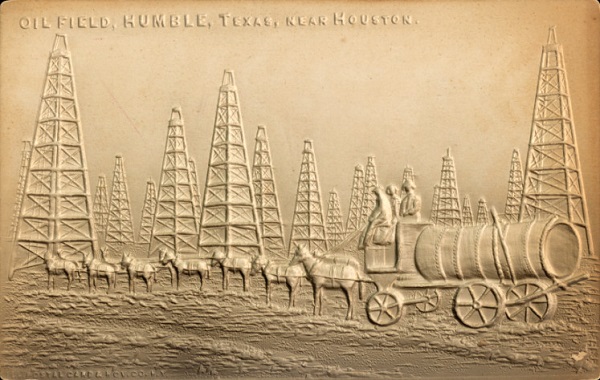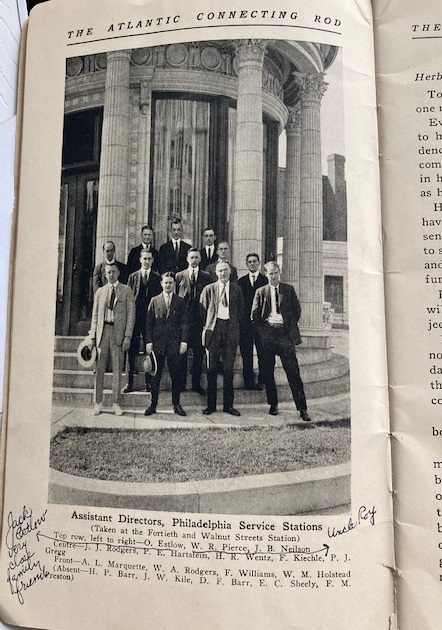This Week in Petroleum History: January 1 – 7
January 1, 1973 – Esso becomes Exxon –
After one year of test marketing the new name, Standard Oil of New Jersey became Exxon, officially replacing U.S. Esso brands and subsidiary Humble Oil and Refining’s Enco brands. The nationwide rebranding applied to 28,600 Esso and Humble Enco stations, costing $100 million in research, product relabeling, and advertising, according to TIME magazine.

“Plans call for Humble to be renamed Exxon U.S., and for Standard Oil of New Jersey to become Exxon Inc.,” TIME reported in 1971, adding the company recognized existing brands could become global. The Enco name was discarded because it means “stalled car” in Japanese. Exxon would become ExxonMobil in 1999 after merging with Mobil Oil.
January 2, 1866 – Patent describes Early Rotary Rig
Peter Sweeney of New York City received a U.S. patent for an “Improvement in Rock Drills” design that included basic elements of the modern rotary rig. The inventor described his idea as a “peculiar construction particularly adapted for boring deep wells.”

Peter Sweeney’s innovative 1866 “Stone Drill” patent included a roller bit using “rapid rotary motion” similar to modern rotary drilling technologies.
Sweeney’s drilling patent, which improved upon an 1844 British patent by Robert Beart, used a roller bit with replaceable cutting wheels such “that by giving the head a rapid rotary motion the wheels cut into the ground or rock and a clean hole is produced.”
The rig’s “drill-rod” was hollow and connected with a hose through which “a current of steam or water can be introduced in such a manner that the discharge of the dirt and dust from the bottom of the hole is facilitated.” The petroleum industry soon improved upon Sweeney’s 1866 rotary rig.
January 2, 1882 – Rockefeller organizes the Standard Oil Trust
John D. Rockefeller continued to expand his Standard Oil Company empire by reorganizing his assets into the Standard Oil Trust, which controlled much of the U.S. petroleum industry through 40 producing, refining and marketing affiliates. The trust also operated all of the Pennsylvania Railroad’s tank cars (also see Densmore Oil Tank Cars) until a U.S. Supreme Court ruling broke it up in 1911.
January 2, 1932 – Birth of Union “76” Brand
The Union Oil Company “76” brand was launched at service stations in western states. The brand’s orange circle with blue type logo was adopted in the 1940s, and the “76” orange orb first appeared at the 1962 World’s Fair in Seattle. A smaller version of the ball proved so popular that millions would be given away as bright attachments to car antennas.

The Union 76 ball debuted in 1962.
The California Oil Museum in Santa Paula is in the original Union Oil headquarters of the 1890s.
January 2, 1974 – President Nixon sets 55 mph Speed Limit
Although setting speed limits earlier had been left to each state, when OPEC cut U.S. oil supplies in October 1973, President Richard Nixon signed the Emergency Highway Energy Conservation Act to reduce gas consumption. As a national speed limit of 55 mph became law, the embargo’s higher gas prices boosted sales of smaller, more fuel-efficient cars from Japan.
In 1995, President Bill Clinton repealed the federal limit, returning the power to the states. In 2023, the highest U.S. posted speed limit was 85 mph — only on Texas State Highway 130.
January 4, 1948 – Deep Discovery in Permian Basin
Exploration of the Permian Basin in Texas intensified when a wildcat well found oil and natural gas in a deep geologic formation. The Slick-Urschel Oil Company drilled the well after partnering with Michael Late Benedum, a renowned geologist who had discovered Pennsylvania and West Virginia oilfields as early as the 1890s.

Tom Slick Jr. of Oklahoma helped Michael Benedum of Pennsylvania discover a deep Permian Basin field in Texas. Image from February 16, 1948, LIFE magazine.
The Permian Basin discovery, the Alford No. 1 well, 50 miles south of Midland, was completed at 12,011 feet. A famous West Texas well completed two decades earlier, Santa-Rita No. 1, had produced oil from just 440 feet deep. The Slick-Urschel Oil well reached a depth of 10,000 feet in less than five months; it took another seven months to penetrate 384 feet.
Help came from Tom Slick Jr., the son of Oklahoma’s King of the Wildcatters, who branched off the well using a “whipstock” and reached the prolific limestone formation. The field was named in 1950 by the Texas Railroad Commission in honor of Benedum, “who devoted 69 of his 90 years to the oil business.”
January 7, 1864 – Discovery at Pithole Creek creates Oil Boom Town
The once famous Pithole Creek oilfield was discovered in Pennsylvania. The United States Petroleum Company’s well reportedly had been located with a witch-hazel dowser. It initially produced 250 barrels of oil a day. The “black gold” rush to boom town Pithole made headlines five years after the first U.S. oil well drilled at nearby Titusville.

Tourists can explore oil history in a Pennsylvania park where they walk the grass paths of former streets in boom town Pithole. Photo by Bruce Wells.
Adding to the boom were Civil War veterans eager to invest in the new industry. Newspapers stories added to the oil fever — as did the Legend of “Coal Oil Johnny.”
Tourists today can visit Oil Creek State Park and its education center on the grassy expanse that was once Pithole.
January 7, 1905 – Humble Oilfield Discovery rivals Spindletop
C.E. Barrett discovered the Humble oilfield in Harris County, Texas, with his Beatty No. 2 well, which brought another Texas oil boom four years after a gusher at Spindletop Hill launched the modern petroleum industry. Barrett’s well produced 8,500 barrels of oil per day from a depth of 1,012 feet.
The population of Humble jumped from 700 to 20,000 within months as production reached almost 16 million barrels of oil, the largest in Texas at the time. The field directly led to the 1911 founding of the Humble Oil Company by a group that included Ross Sterling, a future governor of Texas.

An embossed postcard circa 1905 from the Postal Card & Novelty Company, courtesy the University of Houston Digital Library.
“Production from several strata here exceeded the total for fabulous Spindletop by 1946,” notes a local historic marker. “Known as the greatest salt dome field, Humble still produces and the town for which it was named continues to thrive.” Another giant oilfield discovery in 1903 at nearby Sour Lake helped establish the Texaco Company.
Humble Oil, renamed Humble Oil and Refining Company in 1917, consolidated operations with Standard Oil of New Jersey two years later, eventually leading to ExxonMobil.
January 7, 1957 – Michigan Dairy Farmer finds Giant Oilfield
After two years of drilling, a wildcat well on Ferne Houseknecht’s Michigan dairy farm discovered the state’s largest oilfield. The 3,576-foot-deep well produced from the Black River formation of the Trenton zone.

After 20 months of on again, off again drilling, Ferne Houseknecht’s well revealed a giant oilfield in the southern Michigan basin.
The Houseknecht No. 1 discovery well at “Rattlesnake Gulch” revealed a producing region 29 miles long and more than one mile wide. It prompted a drilling boom that led to production of 150 million barrels of oil and 250 billion cubic feet of natural gas from the giant Albion-Scipio field in the southern Michigan basin.
The formation represented a classic “fracture-controlled dolomite reservoir,” according to petroleum geologists. “The story of the discovery well of Michigan’s only ‘giant’ oil field, using the worldwide definition of having produced more than 100 million barrels of oil from a single contiguous reservoir is the stuff of dreams,” noted Michigan historian Jack Westbrook.
Learn more in Michigan’s “Golden Gulch” of Oil.
January 7, 1913 – “Cracking” Patent improves Refining
William Burton of the Standard Oil Company’s Whiting, Indiana, refinery received a patent for a process that doubled the amount of gasoline produced from each barrel of oil refined. Burton’s invention came as demand for gasoline was rapidly growing with the popularity of automobiles. His thermal cracking concept was an important refining advancement, although the process would be superseded by catalytic cracking in 1937.
_______________________
Recommended Reading: History Of Oil Well Drilling (2007); Sign of the 76: The fabulous life and times of the Union Oil Company of California
(1977); The Great Wildcatter
(1953); Cherry Run Valley: Plumer, Pithole, and Oil City, Pa., Images of America
(2000); Early Texas Oil: A Photographic History, 1866-1936
(2000); Humble, Images of America
(2013); Michigan Natural Resources Trust Fund 1976-2011: A 35-year Michigan Oil and Gas Industry Investment Heritage in Michigan’s Public Recreation Future
(2011); Handbook of Petroleum Refining Processes
(2016).
_______________________
The American Oil & Gas Historical Society (AOGHS) preserves U.S. petroleum history. Become an AOGHS annual supporting member and help maintain this energy education website and expand historical research. For more information, contact bawells@aoghs.org. Copyright © 2024 Bruce A. Wells. All rights reserved.





